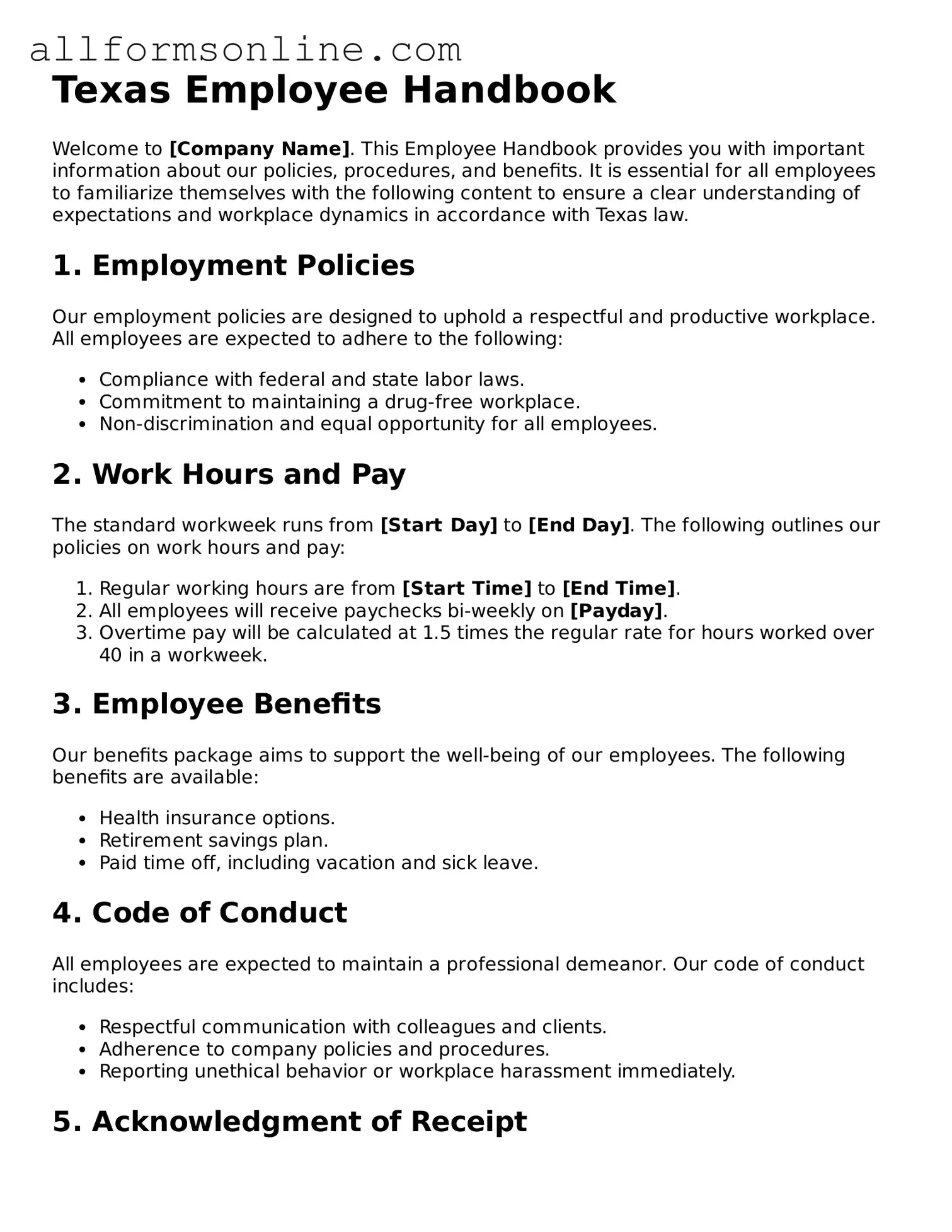What is the Texas Employee Handbook form?
The Texas Employee Handbook form is a document designed to outline the policies, procedures, and expectations for employees in a Texas-based workplace. It serves as a guide for both employers and employees, ensuring everyone understands their rights and responsibilities within the organization.
Why is an Employee Handbook important?
An Employee Handbook is crucial because it sets clear standards for behavior, outlines company policies, and provides information on benefits and procedures. It helps prevent misunderstandings and can protect the employer in case of disputes. Employees can refer to the handbook for clarification on various topics, which promotes a better workplace environment.
What should be included in a Texas Employee Handbook?
A Texas Employee Handbook should include sections on company policies, employee rights, workplace conduct, benefits, leave policies, and procedures for reporting issues. It may also cover topics like anti-discrimination policies, safety protocols, and disciplinary actions. Each section should be clear and concise to ensure understanding.
How often should the Employee Handbook be updated?
The Employee Handbook should be reviewed and updated regularly, at least annually or whenever there are significant changes in laws or company policies. Keeping the handbook current ensures that employees have access to the latest information and helps maintain compliance with state and federal regulations.
Do employees need to sign the Employee Handbook?
While it is not legally required for employees to sign the Employee Handbook, having them sign an acknowledgment form can be beneficial. This form indicates that employees have received, read, and understood the handbook. It can serve as evidence that employees were informed of company policies in case of future disputes.
Can an Employee Handbook be used in legal disputes?
Yes, an Employee Handbook can be used in legal disputes. If a dispute arises, the handbook may serve as evidence of the company's policies and the expectations set for employees. It is important for the handbook to be well-drafted and consistent with employment laws to be effective in such situations.
Is it necessary to consult a lawyer when creating an Employee Handbook?
While it is not strictly necessary, consulting a lawyer when creating an Employee Handbook is highly recommended. Legal expertise can ensure that the handbook complies with all applicable laws and regulations, reducing the risk of legal issues down the line. A lawyer can also provide guidance on specific policies that may be unique to your industry.
Where can I find a template for a Texas Employee Handbook?
